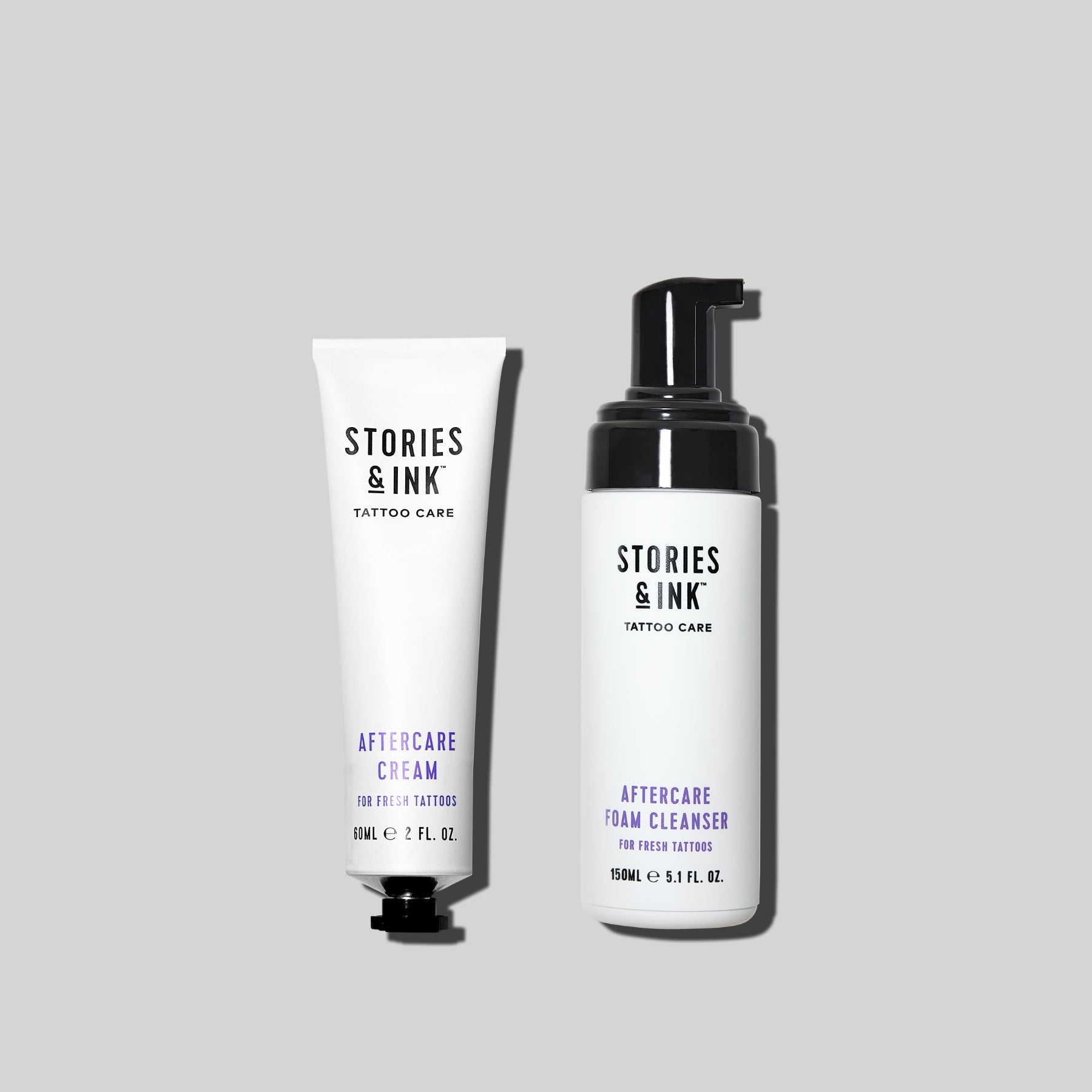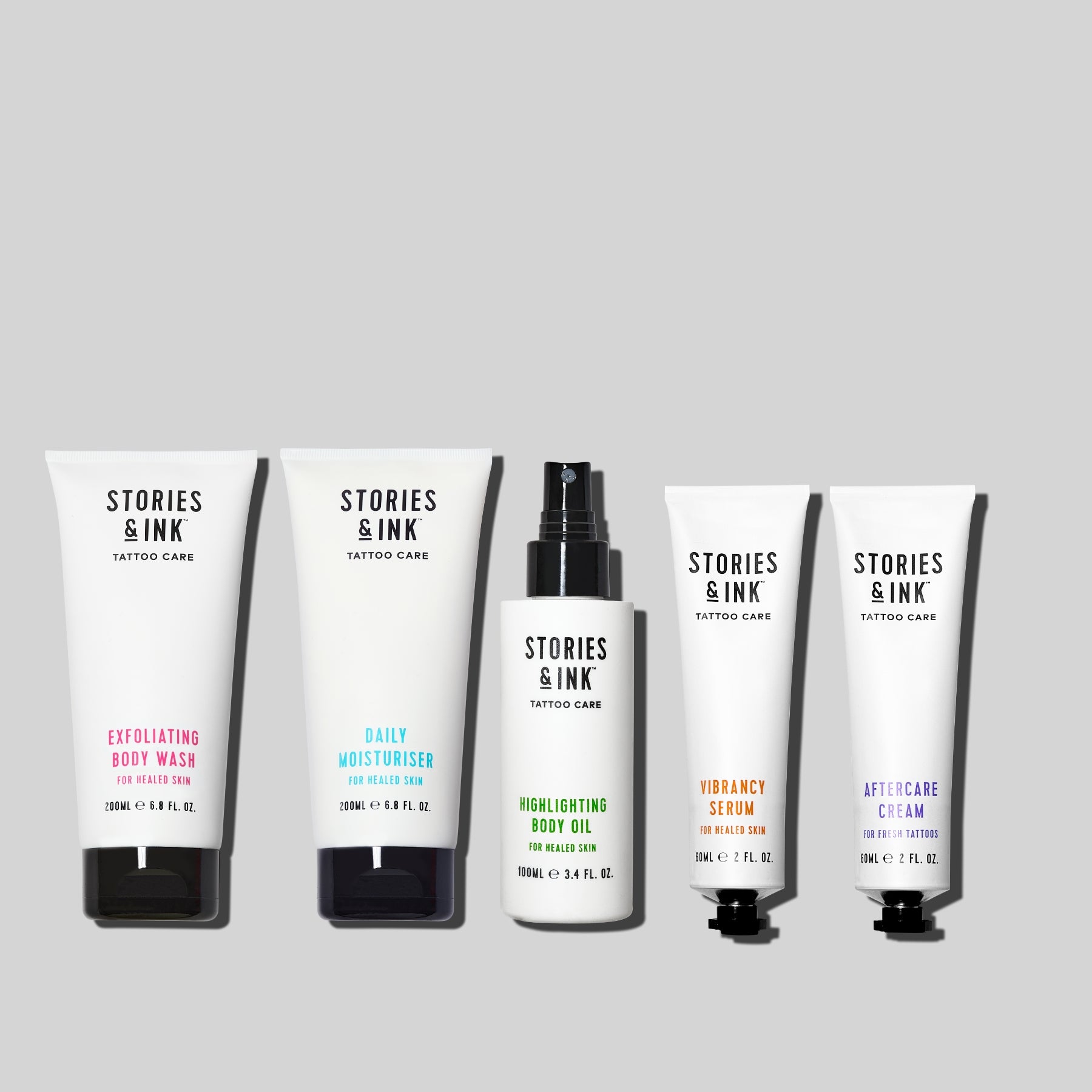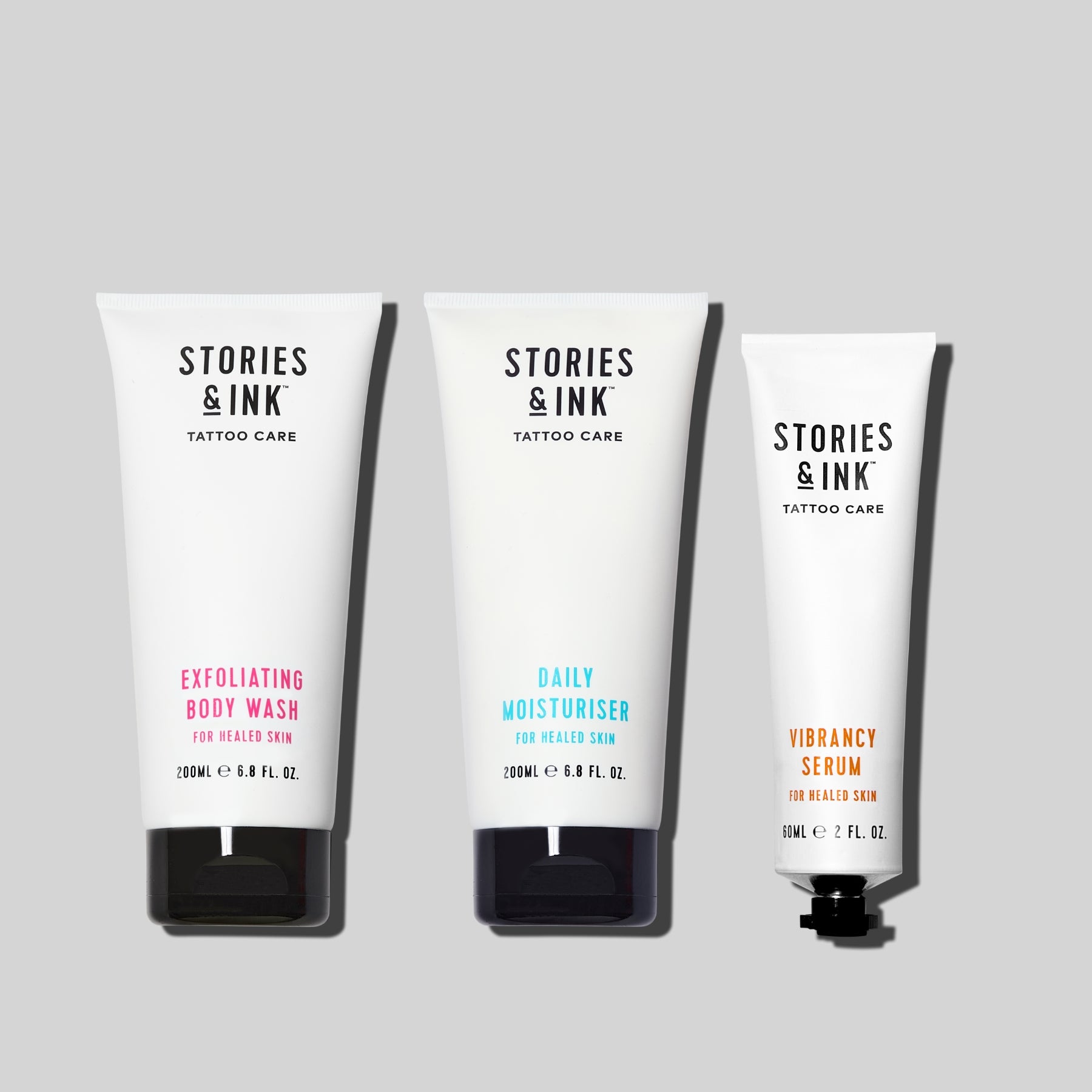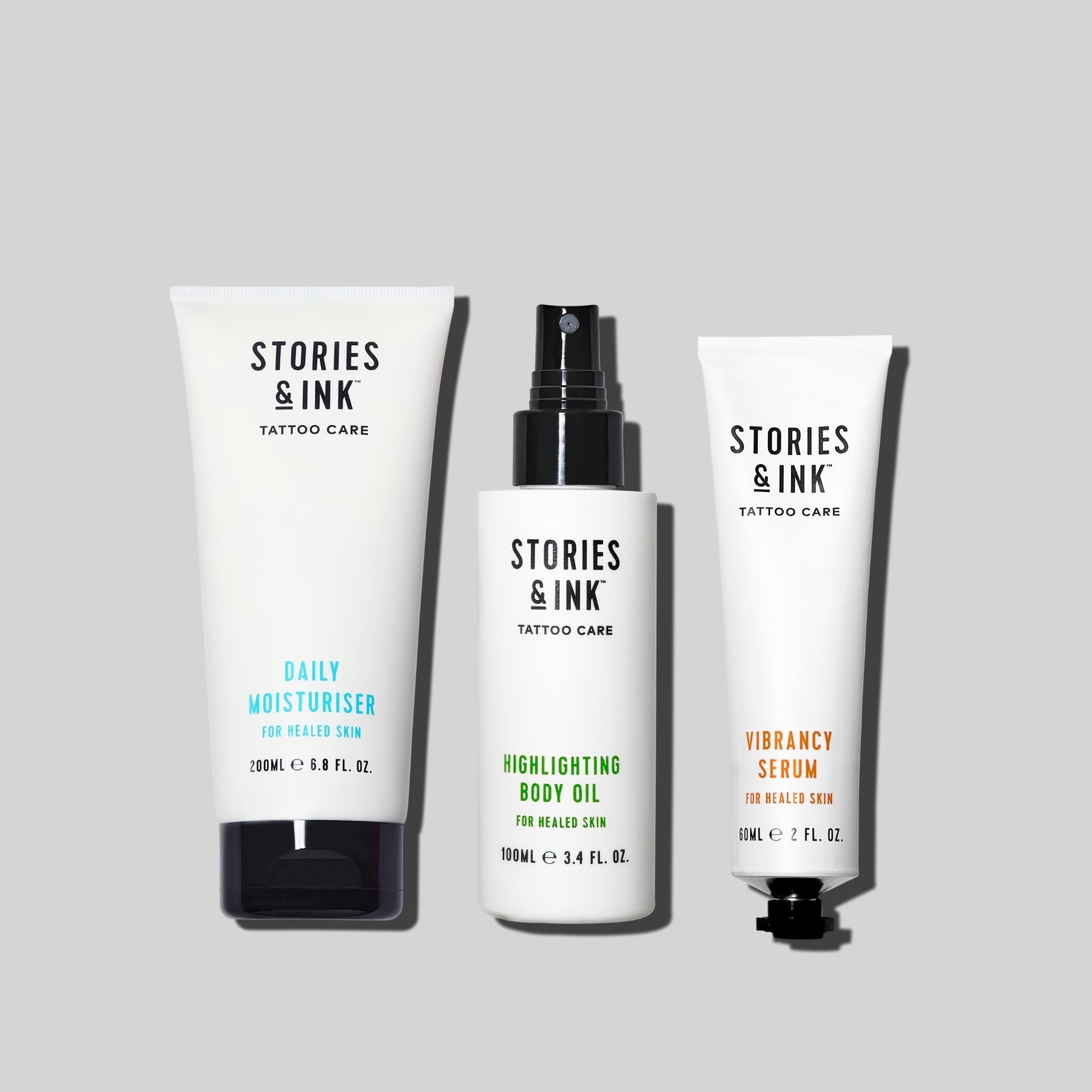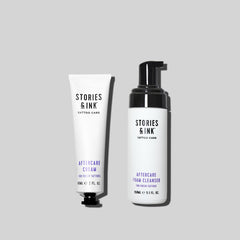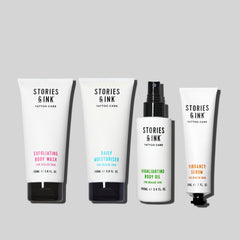When I was a child, probably around eight years old, my sister and I played this weird game in the car on long drives. We called it the piercing game and mostly it involved us pinching a body part until we screamed out in pain. We were obsessed with it. Were we odd, or just curious?
Kids are fascinated by bodies and what they do, which is why tattoos on the skin of the adults in children’s lives are endlessly appealing. The only person I knew who had tattoos when I was growing up was my uncle, it felt like tattoos were something strange and magical for the rebels in the family. But a survey in 2015 found that 30% of 25-39 year olds are tattooed, so for a new generation, growing up with tattooed parents, uncles and aunties, and even grandparents is pretty commonplace.
But have you ever thought about how you might explain the ink on your skin to the children in your life? We called on some tattooed folks to find out how they explain their tattoos to children…
Use your tattoos to create beautiful moments
“My daughter Avery, who’s now 14 months old, helps me moisturise my tattoos each night,” says Rosalie Hurr, tattooed mum and editor of Things & Ink. “I put the cream on my legs, then rub it in and she strokes my skin. She also scratches my tattoos and I tell her that they won't come off. When I've wanted a few more minutes in bed together, we count my cat tattoos, pretty sure I have 14. She loves cats too! When she was a tiny baby, she would stare at the tattoos on my arms. She's just started to notice my husband has them too and points at his.”

Rosalie with her daughter Avery
Buy a book about tattoos
A great way to introduce babies and toddlers to tattoos is to look at an illustrated book together, My First Book of Tattoos by Robyn Wall – which is part of the Cool Family series – for example is perfect for that. “Parents tell me they’ve used the book to have tat chats with their littles,” says the book’s author Robyn. “Some have even bought it for their kids’ nursery and preschool libraries. Quite a few of my close mummy friends and family members have tattoos, including grandma. Though the book features inked parents, my main goal is to make more cuddles happen! At its heart, the book is a celebration of connecting with your cuties in the little years.”


Extract from My First Book of Tattoos by Robyn Wall and illustrated by Lydia Nichols
Be open and honest
Perhaps your children have asked how your tattoos got onto your skin? “My kids ask me how much it hurts,” says Laura Chamley, who’s mum to Gracie, 10, and Billie, 8. “But also what it feels like, why I wanted them, which tattoo is my favourite and which one do I hate. But, I think they're so used to me looking like this, they don't really notice that I'm different to their friends' mums.”
Laura explains what the process of getting tattooed actually involves. “I've talked about how it works, the process with the machine and the needle. I tell them why I chose the designs I did and how my taste has changed over time and that's okay, too. We've talked about some I've had covered up, but mostly I just say that I like how they look.”
Tattoos can nurture creativity and encourage body positivity
My friend has a daughter called Ruby. When she was about five years old, she started asking about my tattoos. I told her that I loved the way they made me feel about my body and that I collect tattoos the way I collect art to hang on my walls. She told me that she'd like to be a tattoo artist one day, so I told her she could practise on me. She went off to her bedroom and came back with a book of stickers. I picked the ones I liked and told her where I wanted them, then she stuck them on me (which is also a good lead into explaining consent to kids).

Alice with five-year-old Ruby
Debunk gender stereotypes
“When my son was about four years old I heard him say 'only girls have tattoos',” says tattooed mum Libby. “I have a lot and so do a few of my girlfriends, and his dad has none. I loved it! Such a shift from when I was growing up and nearly all tattoos I saw were on men. That said my mum had a big tattoo – this was in the 80s – and that has a massive influence on me.”
Learn from your own mistakes
Cosmetic tattooist, Jen had her daughter, Molly, in 2003 when she'd just turned 18. "I already had more tattoos than I should’ve had for my age," Jen, who's now 37, tells us. "Molly never really pointed them out because that’s all she knew. It’s only when I started having them removed and covered up when she was 8 that she'd say ‘oh no, not that one I love that one’."
"When I was younger, I wanted tattoos to make me look older and I wasn’t bothered what they looked like," says Jen. "But Molly's different. Her first tattoo – which she got a month after she turned 18 – was a beautiful simple flower on her chest."

Jen with her daughter Molly – then and now
Molly's now 19 and has learnt a lot from her mum's tattoos. "When I was little, I loved the swallows on my mum’s chest," says Molly. "When I got older, I started to appreciate tattoos as art works. By the time she started getting them covered up, I'd noticed how faded and old they looked. When I was nine, she got ‘wolf mother’ and ‘wolf daughter’ tattooed above her ankle, I thought it was badass! No one else's parents had that and we were our own little pack. Mum has guided me into appreciating the art of the tattooing and not just getting a tattoo for the sake of it."
When kids turn into teenagers
Carola is a teacher to 11-16 year olds and gets asked about her tattoos when they are on show. “The students generally say: ‘Miss, I really like the tattoo on your finger/wrist/foot/leg,” she explains – depending on the time of the year, and what skin is visible. “If they notice a new tattoo, they also ask me about it. Some of my students ask about the meaning of my tattoos. If I have time during lessons, I’ll explain what the meaning is or if I just got them for fun. They like telling me about the tattoos they’ll get when they are older or about their parents or older siblings who have tattoos. I do tell them to make sure you have a good think about what you're going to get when you're old enough and go to a good artist. It’s permanent after all.”
